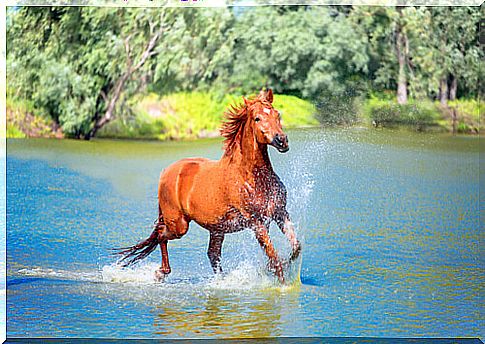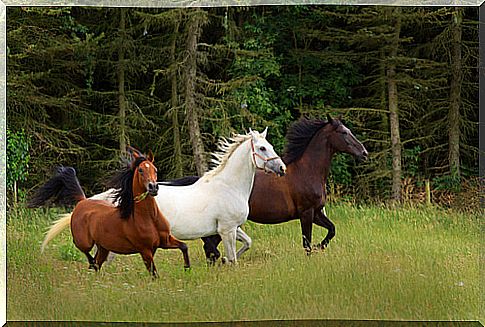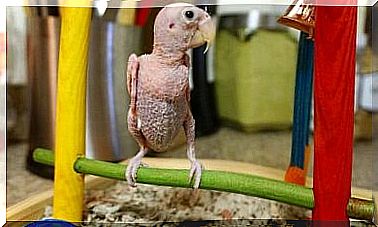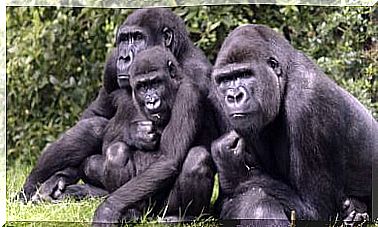Origin And Evolution Of The Horse

Knowing the origin and evolution of the horse is proposing a historical journey. And that can reveal a lot about human civilization.
Living with horses has been very important for the development of our culture.
These animals made it possible to break down barriers, bring huge distances closer together and connect different peoples. They also supplied entire civilizations, with essential supplements for survival.
The origin and evolution of the horse reveals that these animals were able to develop magnificent skills of sociability and coexistence. To the point of creating a historic affective bond between man and equine. And this allowed the survival of both species.

Etymology of the term ‘horse’
These large herbivores are characterized by their long, arched neck adorned by a voluptuous mane.
But this animal was not always called a “horse.” The first Latin term to name this species was “equus”. Late Latin popularized the term “caballus”, which has Celtic roots and means “gelding.”
Already the term “mare”, used to name females, derives from “equa “, feminine of “equus”.
Taxonomy
In principle, domestic horses were believed to belong to a different species from their wild relatives. For this reason, in mid-1758, Linnaeus included domestic horses in the species Equus caballus . While wild horses were already classified within the Equus ferus species .
Later, science proved that wild and domestic horses belonged to the same species. The differences in appearance and character were due to different evolutionary processes and specific training.
That is why currently all horses are gathered in the same species and receive the scientific name of Equus ferus caballus.
Brief summary of the origin and evolution of the horse
The first accounts of horse breeding and domestication were recorded in mid-3500 BC, in the region that today belongs to Kazakhstan. The archaeological investigations allowed to suppose that the first ancestor of the horse lived more than 50 million years ago.
Eohippus (or Hyracotherium)
This is how the oldest ancestor of the horse is known. In reality, the reconstruction of its skeleton makes it more like a tiny dog. His body was between 20 and 40 cm tall. It had a short face and the eye sockets were centered on the face.
These fossils were found in Oregon and in the Eocene sediments of Wyoming. It is assumed that it first appeared 55 million years ago and spread throughout North America and Eurasia.
Mesohippus
Its name means “intermediary horse” (or “middle horse”). It is supposed to represent the transition from the primitive species to the modern horse. Here the teeth with high crowns appear that allow to graze grasses, leaves and shoots, and with it they begin to have good health.
The fossils were found in Canada and in the North American states of Colorado, Nebraska and Dakota. They lived approximately 37 million years ago.
Miohippus
The appearance of the Miohippus marks the first horizontal branching in the horse’s pedigree. It means that the diversification of races begins.
It is assumed that there were many specimens of Miohippus. They widely occupied the Oligocene. Above all, the Florida area and the western United States. They lived 32 million years ago.
Parahippus
They retained primitive features, such as the 3 toes, but represented a major habitat change. It is assumed that they appeared more than 24 million years ago.
Merychippus
It is the first ancestor to have an appearance similar to the modern horse. Although the legs still had 3 toes, the face and the legs were already elongated. This represented the possibility of migrating long distances and perfecting grazing techniques for food.

Pliohippus
He is considered the grandfather of the horse. It branched out widely, giving rise to various races that occupied the entire continent. They lived between 6 and 12 million years ago.
Dinohippus
It is the direct relative of the genus Equus , which includes horses, zebras and donkeys. The fossils were found in North America, but it is assumed that they also occupied Europe, Asia, and South America. They lived 5 to 13 million years ago.
Equus
It was the only genus of the equine family that survived thanks to its adaptive capacity. The first specimen is supposed to have arisen 5 million years ago. Fossils were found on all continents, with the exception of Australia and Antarctica.
The E quus has accompanied humanity in wars, migrations, crops, sports, travel and medical therapy for more than 3,500 years. It represents the most successful adaptation in the process of origin and evolution of the horse.









